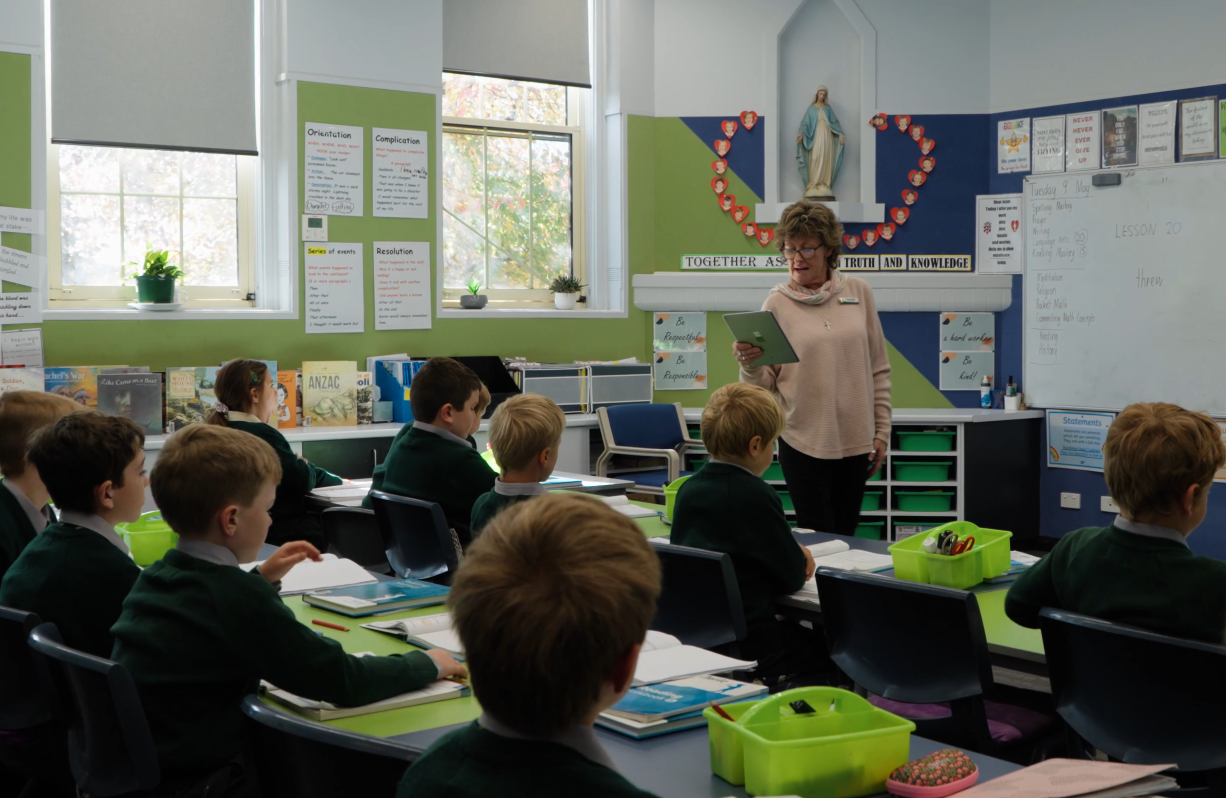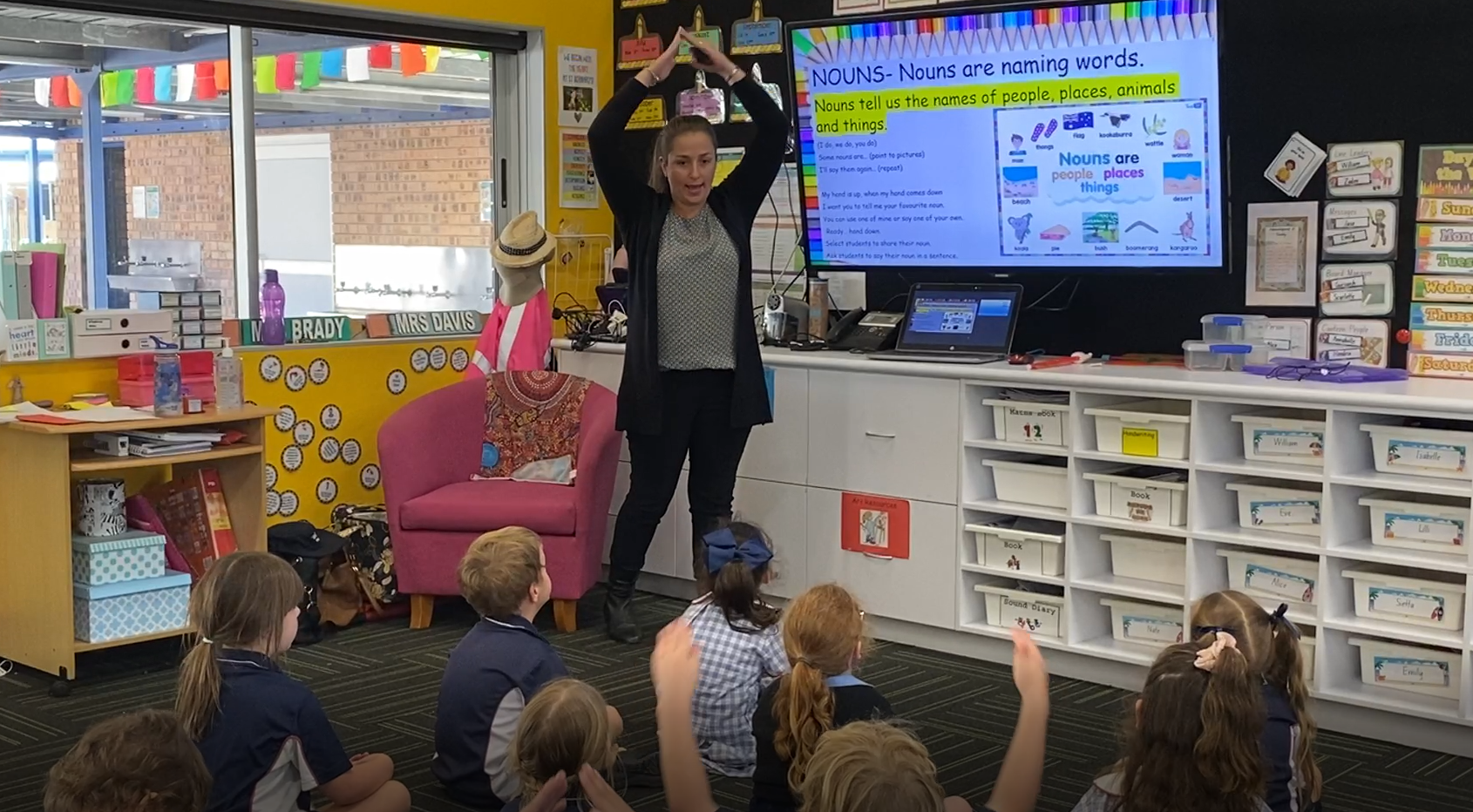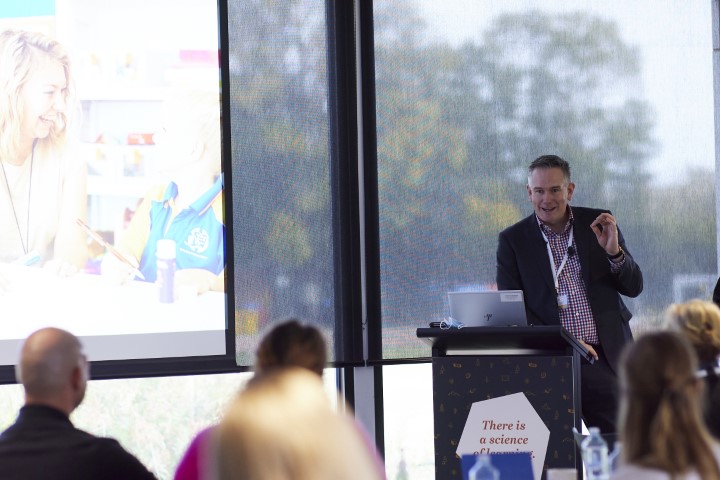CECG schools fast track remote learning: Microsoft Blog
Article sourced from Microsoft Education Blog
There are around 1,000 classrooms spanning the 56 schools operated by Catholic Education, Archdiocese of Canberra & Goulburn. Mindful of the need to ensure consistent and equitable digital access for its students across NSW and ACT, the organisation has invested significantly to ensure each school – regardless of location – enjoys modern internet connectivity. This investment has paid off with students getting reliable access to the huge variety of software applications that have been made available by the schools.
When COVID-19 struck in early 2020, schools had to pivot rapidly to implement a remote learning model due to impending school closures. School bandwidth was no longer a gating factor to digital access. What became more important was not only the teachers’ ability to adapt their teaching model but also the differences in the home technology set up and the digital literacy of their students.
Ross Fox, Director of the Catholic Education Office, says that by mid-February 2020 it was clear from the experience overseas that Australia might have to brace for a prolonged “shutdown of normal life.”
For Fox and his team, that prompted an urgent need for deep thinking about how it might be possible to guarantee continuity of curriculum delivery, whilst teachers and students remained remote from each other. Digital technologies were key – but there were some non-negotiables, he says.
The review of school-based technology they put in place identified a diverse set of classroom tools in use that were, in some cases, not up to the rigours or requirements of home learning. The team quickly realised that some changes would need to be made and an element of standardisation put in place. Whatever remote learning solution was deployed had to offer the highest level of security, be accessible on a range of platforms and devices and, in that time of deep crisis for many, would need to support student and teacher wellbeing – peer group communication and collaboration were going to be crucial.
“We would normally have taken a year to 18 months to select the appropriate systems – but it became clear that Microsoft Teams had all the attributes we wanted,” says Fox.
Microsoft Teams was deployed technically within 35 days, but equally as important, teachers were provided with expert professional development and guidance, allowing them to start to engage students from their homes quickly and easily. Teams provided a single hub through which teachers could connect to one another, access resources and engage their students. “There would not have been continuity of learning or such care in its absence,” says Fox.
Teams webinars also supported the change management associated with moving to remote learning. According to Chief Information Officer Klarissa Plimmer; “Many teachers had never delivered lessons online before and specifically not when students were outside the classroom”. Working with specialist training partner Using Technology Better, teachers were initially trained over three days via Teams webinars. Schools were then asked to identify someone tech-savvy to be trained more deeply who could then go on to teach, guide and mentor the rest of the staff.
According to Adrian Francis, digital trainer at Using Technology Better it was important to; “Move values and cultures to where they can use technology to make everything better – to make their life easier. “
The experience he said had also delivered schools with an opportunity to reflect on how technology can be integrated into learning for older students in years 10-12 preparing them for the sort of environment they might expect in university.
Equitable access
Klarissa Plimmer has been the organisation’s CIO since mid-2019. Under the mantra of “equity and access” she believes that any student or teacher in the care of the Diocese should have equal access to digital tools; “It doesn’t matter if you’re in West Wyalong or Lake Cargellico you should have the same opportunities to give or receive an awesome education as if you were in Nicholls or Red Hill in the ACT.”
During COVID-19 school closures the organisation settled on Microsoft Teams because it not only delivered the required trusted communication and collaboration capability, it was also able to complement existing tools in the individual schools. Having a common digital hub across all schools made it much easier to collaborate across the schools, sharing content, lesson plans and important school information.
Fox says that using Teams provided the opportunity to create collaborative communities across year group teachers – for example bringing together the 70 kindergarten teachers. Instead of having 70 separate lesson plans, the online collaboration afforded by Teams allows, for example, five plans to be chosen and shared easily within a Professional Learning community.
The Learning Agenda
As we have moved out of the immediate COVID-19 crisis the team at Canberra & Goulburn is now looking carefully at what they have learned and how they can continue to benefit from the changes that were put in place. For instance, Fox, commented that Microsoft Teams also; “Now has the potential to give us almost real time insights into what is happening in the learning environment.”
“This could support our aspirations within a new teaching and learning initiative in the Archdiocese, known as Catalyst, where we are looking to change the traditional nature of teaching by curating and sharing the best practices and then spending the energy of the teacher connecting the learner to the teaching.”
Teams could, he says;
“Supercharge collaboration – schools themselves are not the optimal organisational unit for everything, so Teams and its uniformity means you can more seamlessly integrate across schools. It makes it much more possible to get a collaborative unit, not burdened by the silos of school structures.”
The Archdiocese also hopes that information surfaced through Teams can help lift student outcomes. “The Catalyst initiative encompasses very targeted training for teachers based on research and information about student performance.”
Teams has supported rich training and enablement across the system using webinars and targeted subject level content. It’s an enduring capability says Fox, as online-delivery of professional development means that Principals, for example, will no longer face three-hour drives to and from Canberra for face-to-face training – but will be able to participate remotely, even when the pandemic abates.
Geographic reach
Teams was also the important glue binding the geographically dispersed IT project teams during the rapid Teams implementation. Due to border closures, Plimmer led from New Zealand supported by Microsoft and its partner MOQdigital in Sydney, Canberra and Brisbane, with the teaching advisor located in Western Australia.
“We were pretty pushed – delivering over a 20 hour cycle every day – coordinating those groups – and we used Teams for that,” she says.
Joe Rasmussen, business development manager for MOQdigital, says that there was fierce time pressure to get Teams up and running to mitigate the impact of COVID 19 school closures, adding that all 20,000 students and 3,000 staff were brought onto Teams in just a few weeks.
“We usually like a big discovery phase up front – with this one we had to get on the tools straight away. We needed to keep constant communications open between us and Microsoft and the diocese; we were having a standup every morning at 8.30am and the project managers had one every afternoon. Our engineers were working 18-hour weekends as well.”
To support the project MOQdigital set up a dedicated service desk so that parents and staff could call in for support as they got used to Teams.
What also stood the project in great stead was that in December 2019 a project had been undertaken to roll out unique identities to each student and staff member using Microsoft’s Azure Active Directory and Identity Management. That meant that when Teams was deployed rapidly, the access part of the puzzle had already been addressed which was critical to its success, says Fox.
While the technology infrastructure has worked well, Plimmer stresses that they learned all too well that it’s important to take into account the competency level of those being asked to adopt new digital platforms – not all are at the same level. “There are plenty of children still not able to use a keyboard because they are not able to recognise shapes or have trouble with switching on a camera, switching off mute. That can really be a struggle and that is an area we didn’t really anticipate fully.”
Fox agrees that one of the big challenges was that schools’ expectations about what learning they could deliver remotely, exceeded what was possible. “We did have some adoption challenges that were not anticipated. We set expectations very high and the schools did really well to adjust, however there were still many hurdles to overcome,” he says.
Teachers have been on a steep learning curve, striving to tweak their pedagogy to engage students online and make the connections that are critical to learning progress. As Plimmer notes though – it’s worth it because; “When do you get the sort of ‘Aha!’ moments in a digital classroom as you do in a physical classroom – that’s where the joy happens.”
Fox says that the experience has provided a series of important lessons. And whilst the traditional methods of lesson delivery are not wrong – recent experiences prove that they can be augmented using the best available technology and resources, he says.
“The way children learn has not changed – but what tools we have to assist and support that has improved exponentially with modern digital technology.”
“There is a continuing reservation about how digital forums impede social connection. Technology will never displace the importance of the relationship between the teacher and the learner,” says Fox.
“The learnings from our experience of COVID-19 remote teaching and learning is not that education needs to transform – but that we as educators need to be confident we are doing our jobs the best way we can – and what we have been able to achieve has shown us that there are new ways we can achieve


